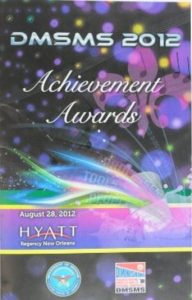Are PCs becoming obsolete?
Recently on NPR I heard that PC sales have hit a record low. With the growing touch screen market, even Windows is focusing their innovation and development on the tablet […]
Recently on NPR I heard that PC sales have hit a record low. With the growing touch screen market, even Windows is focusing their innovation and development on the tablet […]
To answer the question, we need to look at the issues of innovation from a different angle; namely economics and markets. Free markets are a wonderful concept as long as […]
Following a directive from the US military in the early 1990s, the defense industry made a shift from using custom embedded electronic components made to military specifications to commercial-off-the-shelf (COTS) […]
 Saying that something is “good enough for government work” is often meant as a joke and the reference implies “mediocre work.” The irony is that “government work” is often highly sophisticated; systems are designed and engineered to operate in the most extreme environmental conditions for a very long period of time.
Saying that something is “good enough for government work” is often meant as a joke and the reference implies “mediocre work.” The irony is that “government work” is often highly sophisticated; systems are designed and engineered to operate in the most extreme environmental conditions for a very long period of time.
I recently had the pleasure of having lunch with a talented component engineer who has spent much of his career working in the defense industry. During the course of our discussion I learned that some aviation systems need ICs to operate in temperature extremes ranging from -55°C to 125°C; ground units often travel in harsh environmental conditions (e.g. fighting extreme heat and sand storms in deserts) while being exposed to hostile attacks; satellites traveling through orbit are exposed to protons and heavy ions from solar flares, yet must operate reliably in space.
Throughout my work with GDCA and all the issues around obsolescence, I have never come across someone who believes that obsolescence is something to be celebrated and welcomed. Everything associated […]
In the past we’ve talked about the challenges of Last-time Buy and overstock. In Dr. Sandborn’s CALCE Obsolescence Management training, this question illustrates the challenges and risks in regards to what customers can face, at the time of EOL. The answer might be easy if you were looking at a “bridge buy”, where you only need enough to get you to the point of a planned upgrade. If I had to only buy shoes to get me through five years it would be challenging but I could probably come up with a pretty good estimate based on the last five years of my life.
How End-of-Life sometimes feels…
According to the EPA, although electronic waste (or sometimes known as “e-waste”) is less than 10% of the current solid waste stream, it is growing 2-3 times faster than any other waste stream. In 2005 an estimated 26-37 million computers became obsolete and the Consumer Electronics Association reported that roughly 304 million electronics—were removed from US households.
E-waste impacts the international community in many ways. New innovations in industrial and commercial technology have forced obsolescence in equipment like computers, mobile phones and televisions, and refrigerators. As consumers keep up with changing trends, the United Nations Environmental Program (UNEP) estimates that 20-50 million metric tons of e-waste are generated each year and much of this electronic waste gets shipped overseas to developing areas in Asia, Africa, and South America.
 After our evacuation from New Orleans, we wrote about the part that collaboration played in our experiences. While we focused on how the collaboration mostly focused on safely addressing an incoming hurricane; generally when we talk about collaboration here at GDCA, we’re talking about collaboration in the sense of an integrated supply chain poised to protect the embedded industry from unplanned obsolescence.
After our evacuation from New Orleans, we wrote about the part that collaboration played in our experiences. While we focused on how the collaboration mostly focused on safely addressing an incoming hurricane; generally when we talk about collaboration here at GDCA, we’re talking about collaboration in the sense of an integrated supply chain poised to protect the embedded industry from unplanned obsolescence.
That is why we’re taking a moment to celebrate and announce that DMSMS 2012 is back in the saddle for November 26-29, 2012 in Orlando, Florida.
We know that in the face of obsolescence no one can afford to be isolated in the supply chain. That is why we are pleased to announce that in partnership with Curtiss-Write, IHS, and Rochester Electronics we will be presenting on the realities of cross-industry sustainment: Building an Integrated Supply Chain to Support Warfighter Systems.
Proactive obsolescence management can often be an adventure. I like to think of it as a cross-industry supply chain game of chess. On one side, you have legacy experts like GDCA, with a quarter of a century of experience sustaining legacy systems. On the other side you have counterfeit risk, disruptive technology and time.
This year, we had an additional player when it comes to long-term support adventures: Hurricane Isaac.
“DMSMS” is a defense industry term and you can’t talk about embedded obsolescence management without eventually coming across it. For anyone not familiar with it, it stands for Diminishing Manufacturing Sources and Material Shortages. These shortages can happen due to ongoing disruptive technology (going from NAND to DRAM), environmental disaster (such a flooding in Thailand or the nuclear emergencies in Japan), and plain old EOL. And, because you can’t always predict how obsolescence and end-of-life is going to impact a supply chain, you can imagine that the DMSMS conference is something we at GDCA look forward to every year.